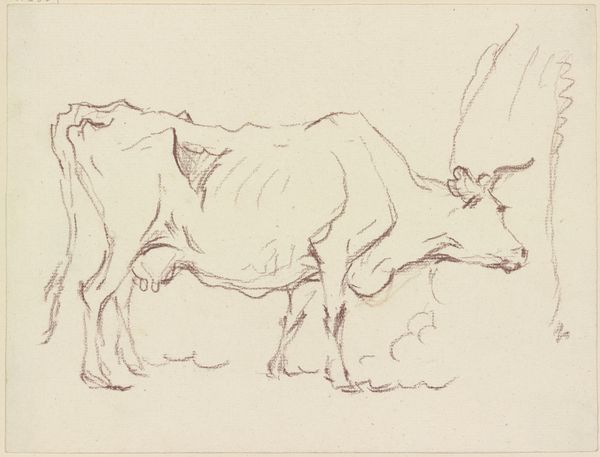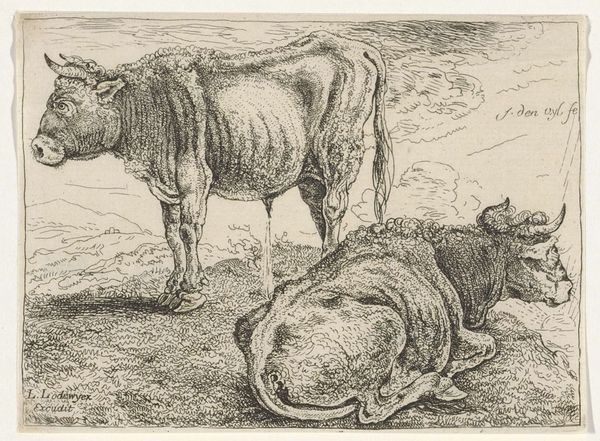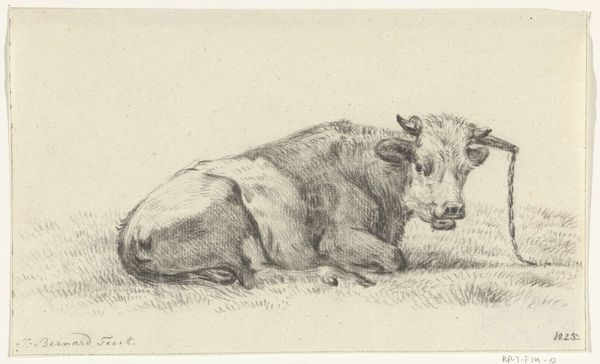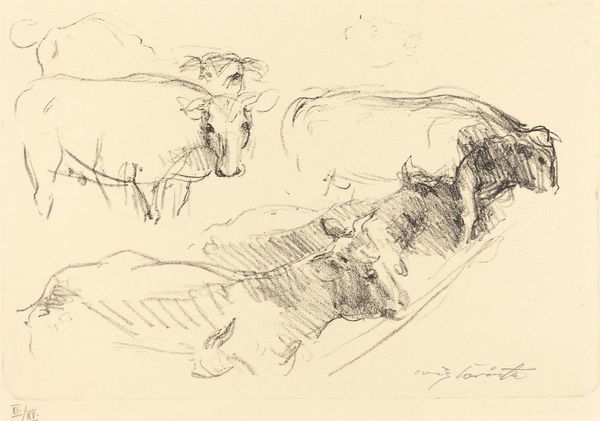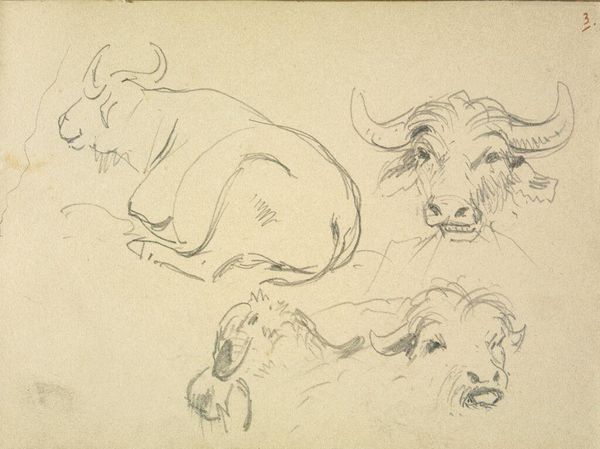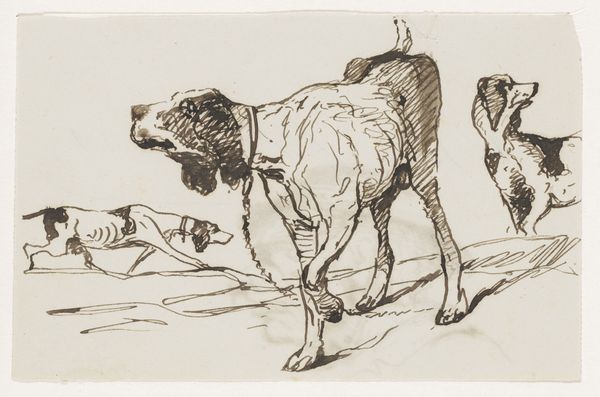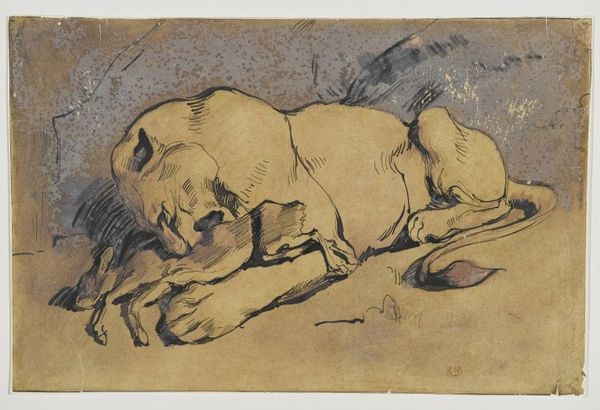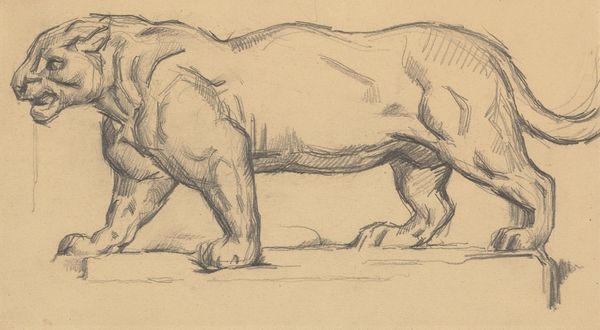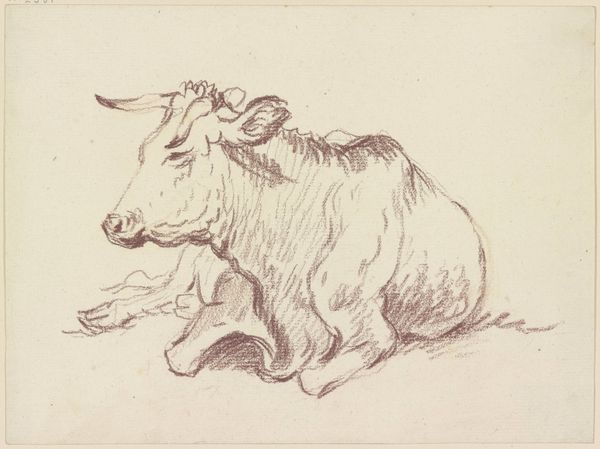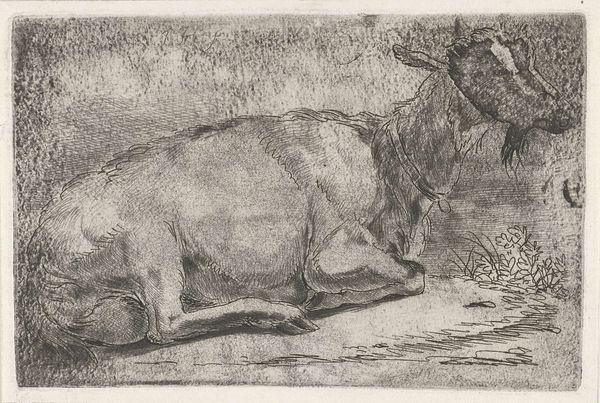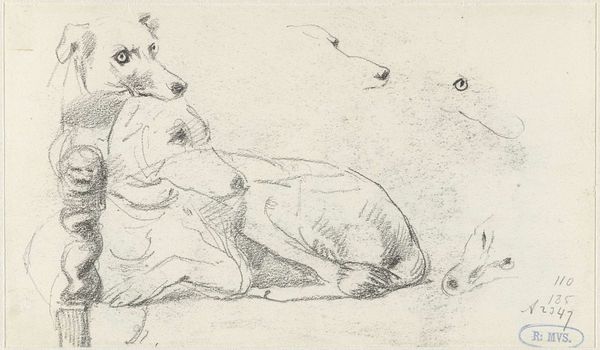
drawing, pencil, graphite
#
drawing
#
ink drawing
#
pencil sketch
#
landscape
#
figuration
#
pencil
#
graphite
#
genre-painting
#
realism
Dimensions: height 164 mm, width 316 mm
Copyright: Rijks Museum: Open Domain
Editor: This drawing, "Twee honden die een varken opjagen," or "Two Dogs Chasing a Pig," is attributed to Jan van Essen and likely created sometime between 1864 and 1936. It's a pencil and graphite sketch with bold lines. There's a frenetic energy in the movement of the animals, heightened by the artist's mark-making. What catches your eye in this piece? Curator: The dynamism indeed! The chase scene is a primal narrative – the hunter and the hunted. Observe how Van Essen uses the dogs not merely as animals, but as symbols of instinct. Consider the historical context: depictions of the hunt have carried cultural weight for centuries, reflecting societal structures, power dynamics, and even spiritual beliefs about life and death. Does this imagery trigger any associations in your mind? Editor: It does make me think about the circle of life, and this constant push and pull that exists in nature. Are the dogs meant to embody a relentless pursuit? Curator: Precisely! Note the urgent lines; they almost vibrate with anticipation and aggression. The pig, conversely, is rendered with a heavier, almost burdened quality. Does this contrast suggest anything about the psychological weight carried by each animal? Editor: Maybe that the pig carries the weight of its own mortality, becoming a symbol of vulnerability, a recognition that can sometimes carry a heavy weight. Curator: Beautifully put. Think also about the social commentary: Pigs in art have sometimes been used as satirical emblems of greed or excess. Could there be a layer of meaning beyond the simple action of a chase? Editor: That’s fascinating. I hadn't considered that it might also represent something about human flaws or behaviors. Thanks for the insight! Curator: And thank you for bringing your fresh perspective! By exploring the symbols and cultural narratives embedded within this drawing, we gain a deeper understanding not only of the artist’s vision, but of the timeless stories we tell ourselves.
Comments
No comments
Be the first to comment and join the conversation on the ultimate creative platform.

